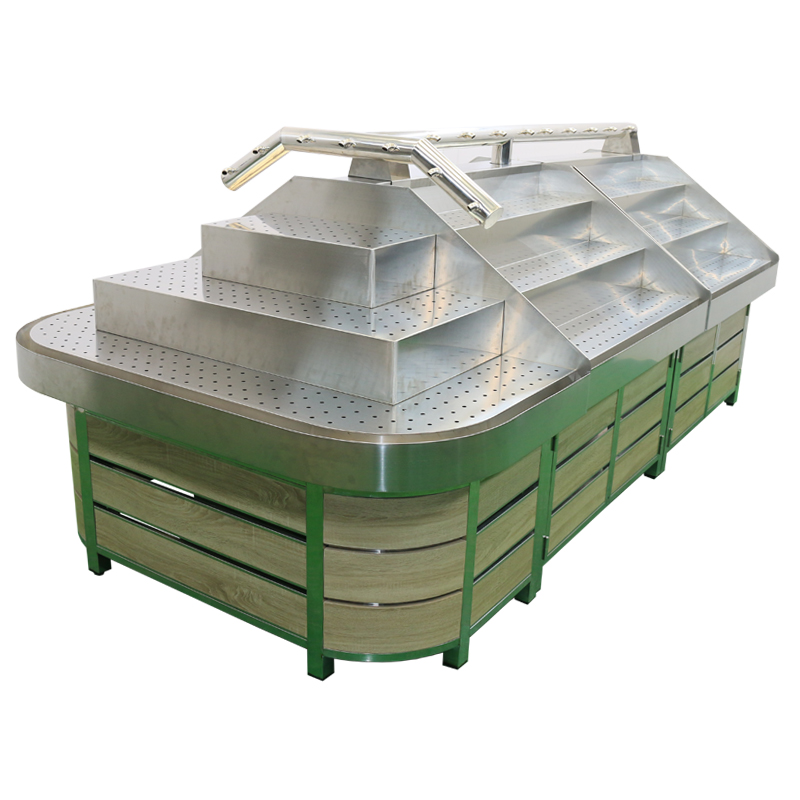
-
 National service hotline
National service hotline
- 400-082-1188
- What is the most important thing at the cash register of the convenience store
- What is the practicability of fresh food shelf
- What should be paid attention to when displaying goods on shelves in the bulk weighing area
- What are the applications of Zhongdao double-sided shelves in supermarkets
- What are the characteristics of steel and wood shelves
Where are the shelves in the fresh food area mainly placed in supermarkets
source:www.juren.top | Release time:2025年01月13日1、 Near the entrance
1. Attract customer attention
Placing fresh food shelves near the supermarket entrance is a common layout. Because fresh products such as vegetables, fruits, meat, seafood, etc. have bright colors and strong odors, they can attract customers' attention at the first time. As soon as customers enter the supermarket, the visual and olfactory senses of fresh vegetables and fruits, as well as the texture of meat, can stimulate their desire to purchase.
For example, placing fresh shelves with red tomatoes, green vegetables, and yellow bananas at the entrance is like a silent advertisement, telling customers that the supermarket's products are fresh and rich, attracting them to enter the supermarket for in-depth shopping.
2. Guide customer flow routes
When the fresh food area is located at the entrance, customers will naturally be guided to browse the fresh food area first. From the perspective of shopping psychology, once customers start selecting products in the fresh produce area, they are more easily guided to follow the shelf layout of the fresh produce area towards other areas of the supermarket. This is beneficial for supermarkets to plan customers' shopping routes, allowing them to browse more products and increase their stay time and purchase probability in the supermarket.
2、 Central location within the supermarket
1. Gather popularity
Placing the fresh food shelves in the central position inside the supermarket can become the core area of the supermarket, playing a role in gathering popularity. Fresh products are a key category for customers' daily shopping, and they are placed in a central location. When customers go to the fresh food area to purchase goods, they will pass through other product areas such as the grocery area and daily necessities area, which can drive the sales of other products.
For example, in a large comprehensive supermarket, the fresh food area is located in the center, surrounded by shelves for beverages, snacks, seasonings, and other items. Customers may see other products on their way to the fresh food area in order to purchase fresh products, and may casually put the necessary drinks, seasonings, etc. into their shopping baskets, thereby increasing the overall sales of the supermarket.
2. Convenient for customers to find
Due to the frequent purchase of fresh products by customers, placing the shelves in the center of the fresh area makes it easier for customers to find them. Once customers become familiar with the layout of the supermarket, they can quickly locate the fresh produce area while shopping, making it convenient and efficient for them to purchase the desired fresh products. This layout also conforms to customer shopping habits, reducing the time and energy costs for customers to search for fresh products.
3、 Adjacent to the relevant area
1. Adjacent to the food processing area
It is a reasonable layout for the shelves in the fresh food area to be close to the food processing area (such as baking area, cooked food area, etc.). On the one hand, customers may consider purchasing some processed food after purchasing fresh ingredients. For example, after purchasing vegetables and meat, customers may have a desire to buy them when they see grilled meat in the nearby cooked food area or bread in the baking area, which can be used to pair with fresh ingredients.
On the other hand, the processing area can utilize ingredients from the fresh produce area for on-site processing to ensure the freshness of the food. For example, the baking area can directly use raw materials such as eggs and milk from the fresh produce area to make bread, allowing customers to feel the freshness and safety of the food.
2. Adjacent to the cold chain region
Many fresh products such as meat, seafood, dairy products, etc. require cold chain storage. Adjacent the fresh food shelves to the cold chain areas (such as refrigerators, freezers, etc.) can facilitate restocking. The staff can easily retrieve the products that need to be replenished to the fresh shelves from the cold chain area, ensuring that fresh products are displayed and sold in a suitable temperature environment.
At the same time, customers can easily obtain matching products that require low-temperature storage from nearby cold chain areas when purchasing fresh products, such as selecting sauces, frozen dumplings, and other products from the nearby refrigerator when purchasing fresh meat.
Prev:
What is the main function of a single-sided shelf…
Next:
What are the structural characteristics of conven…

 Micro signal:
Micro signal:


 official account
official account
 applet
applet
 wechat
wechat
 contact
contact
 phone
phone